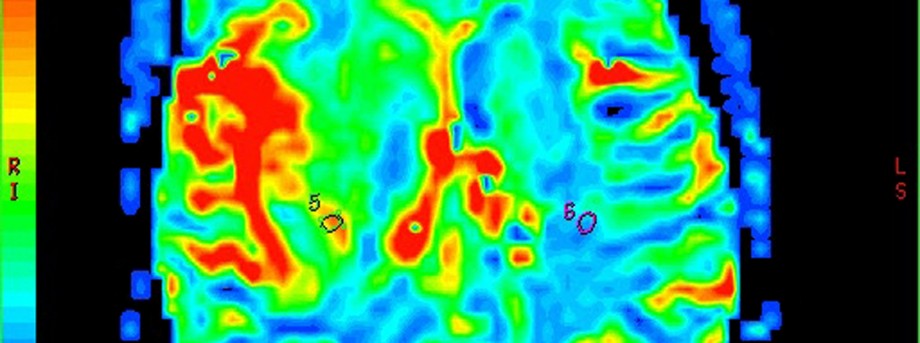The University of Nottingham
 Exchange online
Exchange online
Research Exchange
Scientists discover new biological marker for Parkinson’s Disease

Researchers in Nottingham have discovered a new biological indicator which could potentially help to track the progress of Parkinson’s disease using powerful MRI scanners.
Using highly sensitive new brain imaging techniques, scientists from The University of Nottingham and clinicians at Nottingham University Hospitals NHS Trust have discovered a measurable trait on the human brain which could be used not only to diagnose the condition but potentially also to track progression of the disease.
Parkinson’s develops when dopamine producing nerve cells in the brain die. Current diagnostic imaging tests using nuclear medical techniques are costly and cannot be used to monitor disease progression. There has been a need for such imaging tracking in Parkinson’s disease to allow for the development of neuroprotective drugs through clinical trials.
In a paper published in the journal Neurology, the Nottingham researchers led by Penny Gowland, Professor of Physics, reveal that this new discovery could potentially lead to a new diagnostic test for the disease.
Professor Gowland, who is based at the University’s Sir Peter Mansfield Magnetic Resonance Centre, said: “When conducting a different study of patients with Parkinson’s, by using a 7T MRI scanner (which is an extremely powerful MRI scanner), we discovered a mark which looked like a ‘tear drop’ on the brains of healthy subjects, and this was not visible in the brains of patients. In subsequent post mortem scans, we actually discovered that this was something called nigrosome 1. It was known from previous post mortem work that nigrosome 1 could not be found in brains of Parkinson’s disease patients.
‘So this was a breakthrough discovery in that we now know that using this particularly sensitive MRI scanner, we can see that patients living with Parkinson’s disease don’t have this particular feature in their brain.”
Now, researchers will take their findings and look into how this discovery can be translated into standard MRI scans used in most hospitals.
Professor Gowland added: “We are now conducting a study of patients with Parkinson’s to ascertain when this mark actually disappears, which could potentially have huge implications for early diagnosis of the illness, and subsequently how it is treated.”
Dr Nin Bajaj, Associate Honorary Clinical Professor in Neurology at Nottingham University Hospitals NHS Trust, said: “By using highly accurate and sensitive brain imaging techniques for Parkinson’s we are able to get an insight into the mechanism that causes the disease for the first time.
“We have been trying to find a biological marker for Parkinson’s for many years and the reason is that we need a tool to measure change in the disease in clinical trials in a very sensitive way. This discovery is a step change in Parkinson’s disease, it’s a game changer as they say and the implications are potentially huge.”
A full copy of the research paper can be viewed on the Neurology website. The research involved academics at The University of Nottingham’s Sir Peter Mansfield Magnetic Resonance Centre, Division of Radiological and Imaging Sciences and School of Psychology in collaboration with the Divisions of Pathology and Neurology at Nottingham University Hospitals NHS Trust.
The work was funded by the Medical Research Council and the Engineering and Physical Sciences Research Council (EPSRC).
The Sir Peter Mansfield Magnetic Resonance Centre is named after The University of Nottingham professor who played a central role in the development of MRI technology which revolutionised diagnostic medicine in hospitals around the world. His contribution to the discovery earned him the Nobel Prize for Medicine in 2003.
Leave a Reply
Other

Top prize for quantum physicist
A University of Nottingham physicist has won a prestigious medal from the Institute of Physics for […]

Zero carbon HOUSE designed and built by students comes home
Design and construct a low cost, zero carbon, family starter home, transport it to Spain, build […]